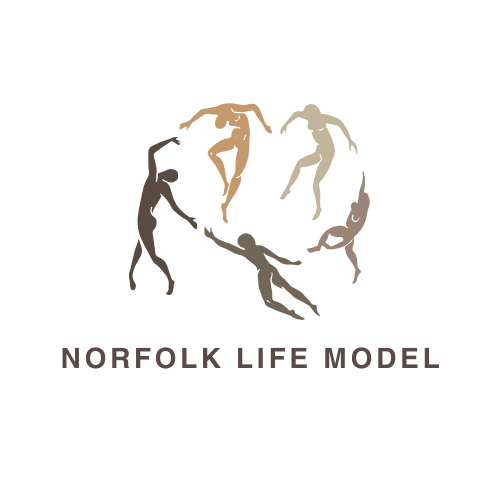The Importance of Life Drawing: Insights from Life Models and Artists
Life drawing forms a cornerstone of artistic development, helping artists understand human anatomy, proportion, and form. This comprehensive guide explores why life drawing remains essential for both beginning and accomplished artists.
What Makes Life Drawing Essential for Artists?
Life drawing provides unique opportunities to study the human form through direct observation. Artists learn to capture both subtle details and overall proportions while working with live models.
Regular life drawing practice helps develop crucial observational skills that transfer to all aspects of visual arts.
How Do Life Drawing Classes Work?
A typical life drawing class includes a professional model who holds various poses. Sessions usually begin with quick gestural sketches before moving to longer poses.
Artists work with their choice of materials, from pencil marks to permanent ink or chalk or charcoal, while focusing on the shapes before them.
What Role Do Models Play?
Models provide artists with opportunities to study the human figure in various poses. Professional models understand how to hold difficult poses for extended periods.
They work closely with art teachers to create interesting pose sequences that challenge and develop drawing skills.
How Has Life Drawing Evolved Historically?
Historical accounts show fascinating developments in life drawing practices. Leonardo da Vinci and Michelangelo made continuous study of anatomy central to their work.
The Royal Academy in London initially restricted female students’ access to nude models, limiting their ability to develop complete anatomical knowledge.
What Skills Does Life Drawing Develop?
Life drawing builds fundamental artistic abilities through observational drawing. Artists learn to foreshorten, understand musculature, and capture proper proportions.
These skills prove essential for portraiture, figure drawing, and many other aspects of visual arts.
How Do Modern Classes Differ?
Contemporary life drawing classes embrace diverse approaches to drawing the human form. Many artists now combine traditional techniques with new media.
Classes often circle around the model, allowing artists to sketch from different angles and perspectives.
What Equipment Do You Need?
Basic life drawing requires minimal equipment: an easel, drawing materials, and paper. Different materials suit different approaches to drawing.
Artists may experiment with various media as they develop their personal style.
How Do You Progress in Life Drawing?
Progress comes through regular practice and studying male and female nudes. Artists typically start with simple poses before tackling more challenging positions.
Continuous study helps artists move from basic sketches to more accomplished works.
What Makes a Good Life Drawing Session?
Successful sessions balance different pose lengths and types. Models and artists work together to create productive learning experiences.
The art community benefits from well-structured sessions that allow for both quick studies and detailed drawings.
Key Points to Remember:
- Regular practice develops observational skills
- Various materials suit different approaches
- Models crucial for anatomical understanding
- Historical restrictions shaped development
- Basic equipment needs are minimal
- Progress requires consistent practice
- Balance of quick and long poses helps learning
- Community support enhances experience
- Anatomical knowledge remains essential
- Different perspectives aid development
Frequently Asked Questions
Q: Why is life drawing important for artists?
A: Life drawing is super important because it helps you develop your drawing skills by studying real-life poses and anatomy. It teaches you about proportions, perspective, and how to capture movement, which is crucial for any artist, whether you’re painting or sketching.
Q: What can I expect in a life drawing class?
A: In a life drawing class, you can expect to draw from live models, often in various poses, including nude for art. The class usually includes warm-up sketches, longer poses for detailed work, and guidance from an instructor to help refine your techniques.
Q: Are there specific drawing models used in life drawing?
A: Yes! There are various drawing models, including male and female models, and they may pose nude or in costumes. Different models can bring unique qualities to your life studies, helping you explore diverse body types and poses.
Q: Can beginners join life drawing sessions?
A: Absolutely! Many life drawing groups welcome beginners. It’s a great way to learn drawing from life, and you’ll get tips along the way from more experienced artists. Just bring your enthusiasm and a willingness to learn!
Q: Do I need to have advanced drawing skills to attend life drawing lessons?
A: Not at all! Life drawing lessons are suitable for all skill levels. Even if you’re just starting out, you’ll find that practicing with drawing models can really enhance your skills over time.
Q: What’s the difference between life drawing and still life?
A: Life drawing involves drawing from live models, capturing human forms and poses, while still life focuses on inanimate objects. Life drawing helps you understand the human body, which is a key aspect of fine art!
Q: Are there any specific guidelines for artists when working with nude models?
A: Yes, there are some important guidelines to follow. Always respect the model’s comfort and boundaries, and maintain a professional atmosphere. Most art schools and classes will discuss these guidelines beforehand.
Q: How can life drawing benefit women artists specifically?
A: Life drawing can be particularly beneficial for women artists by providing exposure to diverse body types, enhancing their understanding of anatomy, and allowing them to express their perspectives through drawing from nude models for aspiring female artists.
Q: What types of poses can I expect from life models?
A: Life models often hold a variety of poses, from dynamic and active to relaxed and still. Expect a mix of short poses for quick sketches and longer poses for in-depth studies, which are great for honing your drawing skills.
Q: Where can I find drawing groups or classes for life-drawing?
A: You can find many life drawing classes at local art schools, community centres, or through online platforms. Just search for “life class” or “drawing groups” in your area, and you’ll likely discover plenty of opportunities to study from nude models!
Read about my first life modelling experience here

